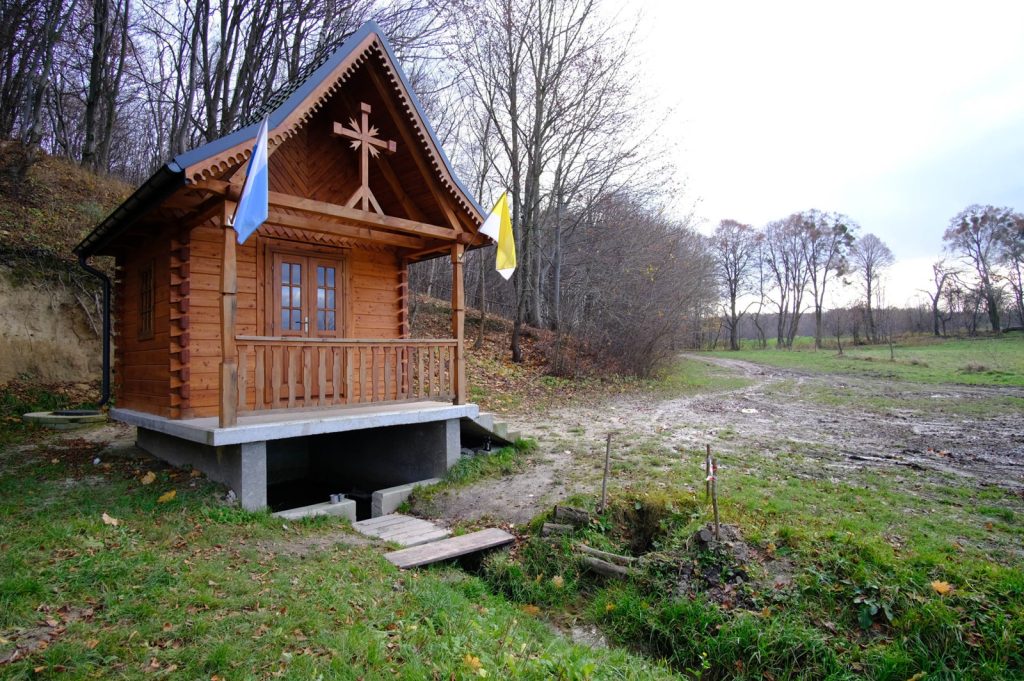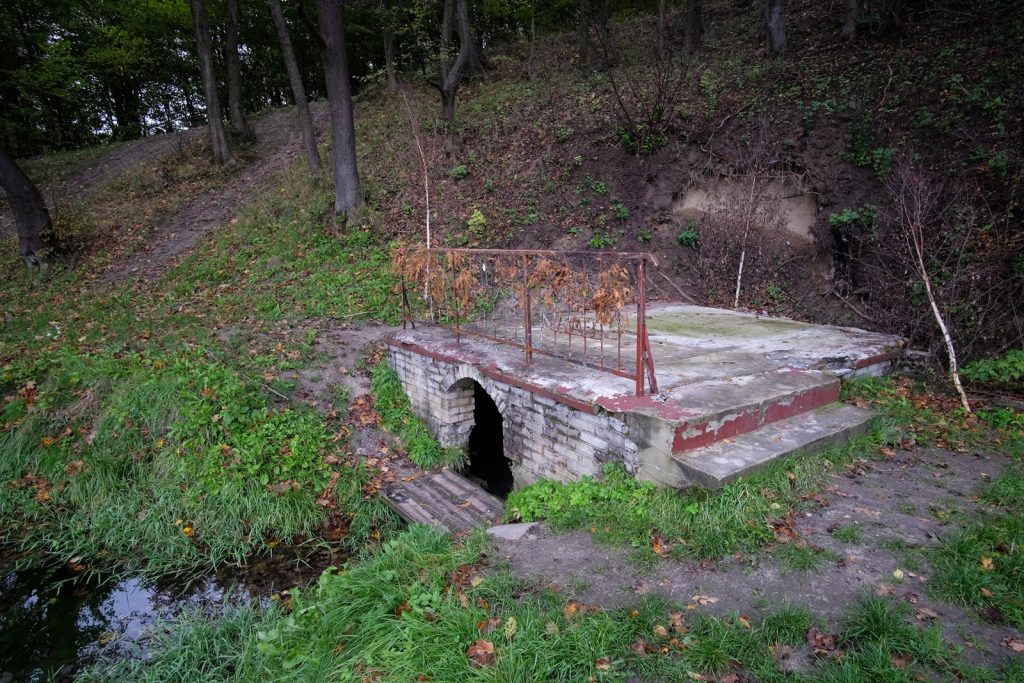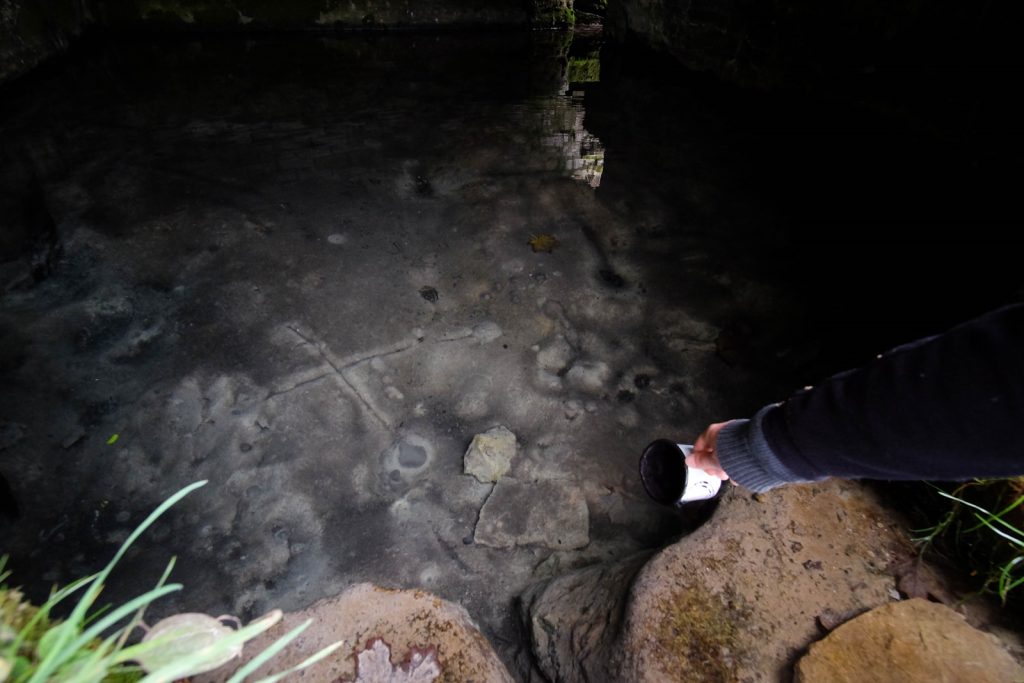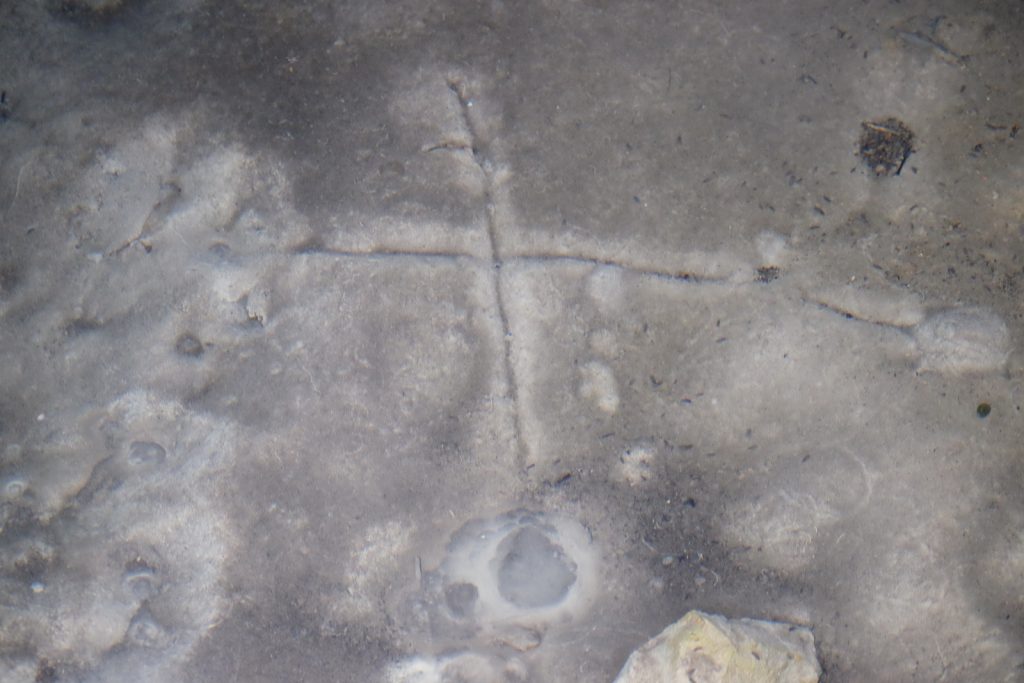LIPSKO-POLESIE, GM. ZAMOSIA, POW. ZAMOJSKI
LIPSKO-POLESIE, GM. ZAMOSIA, POW. ZAMOJSKI
"Miraculous spring" flowing from under the so-called St. Roman's Mountain, where the remains of an early medieval castle are located. Above the spring was a wooden chapel from 1906, which burned down in 2017. It is currently being rebuilt.
M. Stworzyński describes in 1835 the spring of St. Roman, which is located in the fields, according to tradition the site of the former village of Stare Lipsko. Every year on St. Roman's Day, a procession made up of residents of the surrounding villages was held to the spring. People tormented by various diseases were also drawn to the spring.
By the residents of the village of Lipsko-Polesie, the place is called Apparition or Town. According to local legend, a prince went astray in this place years ago during a hunt. Wounded by an aurochs, while looking for water he summoned his mother, who appeared to him and, by ripping up the leaves, revealed the spring located here. The prince was said to have recovered and built a castle on a neighboring hill. Another legend from the late 17th century tells of a shepherd who fell ill. When his daughter replaced him by the sheep, wolves attacked the flock. The girl then appeared to her old man, saying that there was a spring behind the mountain that would heal her father. The shepherd recovered. Another story tells of the illness of the child of the owner of the manor in Leipzig. His body was supposed to be covered with ulcers, then a girl who was working at the manor at the time grabbed it and ran with it to the spring, where it immediately recovered. This took place on August 9, St. Roman's Day. Every year on the first Sunday after August 9, an indulgence is held at the spring. In the rock from which the spring erupts, a cross, probably older than the 1906 chapel, was visible until recently. To the left of it, wooden logs could be seen hammered in, the remains of an older chapel or wooden crosses. During the repair and reconstruction of the chapel after a fire in 2017, both the engravings on the rock and the remains of the older structures were buried and destroyed. There is a rich early medieval settlement in the area, including a barrow cemetery from the 8th to 10th centuries.
Sources of information: interviews with residents of Leipzig; Mikołaj Stworzyński, Opisanie statystyczno-historyczne dóbr Ordynacji Zamojskiej, 1834, Biblioteka Narodowa w Warszawie, rkps Biblioteki Ordynacji Zamojskiej nr. 1815, k. 38; http://izbapamieci.gminazamosc.pl/izbapamieci/resource_show/137/; http://www.kronikatygodnia.pl/wiadomosci/5033,spalila-sie-kapliczka-sw-romana-w-lipsku-polesie-t; Kawałko D. 2008;
Geographic coordinates: 50.628921, 23.241932


Current state of the chapel after renovation






The chapel after it burned down in 2017 and one of the two crosses carved into the rock from which the spring emerges is visible
"Wonderful place" on Heldensfeld's map of Western Galicia (1801-1804).